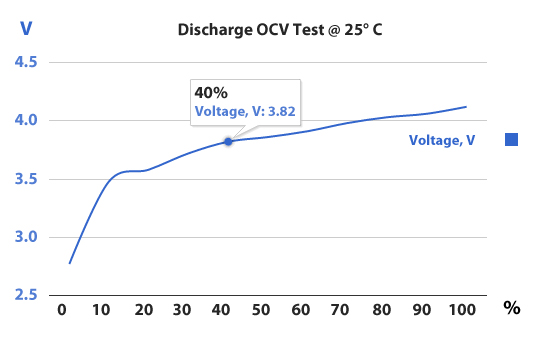A little bit of the battery voltage is claimed by the 560 Ohm resistor on the driver. As I said, it would be best to take measurements with the actual setup.
Hmm so they actually shut off a bit below what the claimed Vf is?
I had actually planned to use 2 for more uniform light, but I was planning to wire them in parallel.
I think having them shut off at around 3.2v is ideal so that you still have some usable charge in the battery left.
I don’t have a variable power supply though, so if it varies much with the different set-ups it could take a lot of trial-and-error.
I’m planning to use 2 blue led’s for my first permanent installation, I assume you don’t have any of those to test?
Blue LED’s are similar to white ones - the little voltmeter modules I just bought are shutting off below 2.7V with the blue display. You could add one 1N4148 (or LL4148 for SOD80 package Redirect Notice) in series with the LED’s.
Are you fairly certain that would be the one I need? If so, i can order them on ebay for super cheap.
Yes, these are multi-purpose for smaller currents up to 200mA. They can be used on different applications, to reduce the voltage by 0.6 Volts, as rectifier or protection diode. But you could try almost any other Si diode first if you got some in your spare parts box or salvage it from an obsolate circuit and order them later when the setup is finished.
I don’t have many spare parts. The only diodes I have are LED’s, SS34 schottkeys, zeners, and the reverse polarity diodes used on all of wight’s drivers.
You could use one the zeners you have, just in the forward direction (rather than the usual reverse for zeners), its Vf will be ~0.7V just like a standard diode. Obviously the reverse voltage will be whatever the zener is rated at, but it won't matter as it won't see any reverse voltage.
Just a thought...
Do you think the standard reverse polarity diodes would work the same way?
Reverse polarity diodes are most likely Schottkys, too. You want a forward voltage as low as possible with these, something Schottkys deliver (~0.1…0.2V) what makes them unsuitable to get a notable drop in voltage. But the zeners should work as Crux said.
Ok. I’ll give the zener a shot when I get the 20mm boards (oshpark marked them ’shipped” today).
I was hoping to use the other ones because I have plenty of them, wheras I only have 2 zeners left.
EDIT: I want to save my zeners, and I’ll probably need more than one, so I just ordered these.
Yep, those will work fine.
Thanks for the tips guys. It’ll make this idea even better. Now there will be no worries about over-draining cells.
I also updated the OP to make it easier for others to try this.
If your planning to run two in parallel could you set them up with two different colors that go off at different voltages. Maybe blue down to 3.7V and red to 3V.
Hmm how do you think an rgb led would behave?
If it’s separate IAD ( individually addressable) dies then maybe it would work but then they would be all in one place. 3 - 0805 smd’s 120 degrees apart might be nicer but all you need is one or two voltage settings. I have a bunch of SMD LEDs I bought for a similar project using a quad opamp but my ideas seem to have short expiration dates.
The green and blue led would die off at about the same voltage, but if you place a diode before the blue one the voltage spacing between r g and b may be useful.
The green and blue led would die off at about the same current, but if you place a diode before the blue one the voltage spacing between r g and b may be useful.
Exactly, set them up so that battery decay turns them off one by one.
The voltages for one red/green/blue are about 1.6/2.0/2.5 V for cutoff - if they are all in parallel I would add 1-2 diodes to them in series (+1.2V for two) and you get ~ 2.8/3.2/3.7 V indicator. Or one red in series (+1.6V).
The really useful voltages IMO are ~50% remaining, ~20% remaining, and 'please recharge' . So that would be 3.85V, 3.6V and say 3.0V according to the graph below. You'd have to play around with colour leds and diodes to find out how to get there. I might have a go at that, sounds like fun.  And then make a new version of the switch board with a lay-out that accommodates the circuitry, when a small Omten is used it will certainly fit.
And then make a new version of the switch board with a lay-out that accommodates the circuitry, when a small Omten is used it will certainly fit.

(the picture is from battery university, this should be a typical li-ion cell, voltages are resting voltages, not under load)
The 20mm PCB’s were delivered today. They look good, although the slots are not present in these. The extra diameter should still make it possible to use the larger omten 1217.
Build thread for my S8 should be posted later today